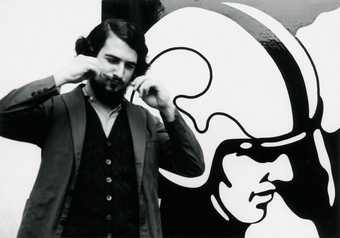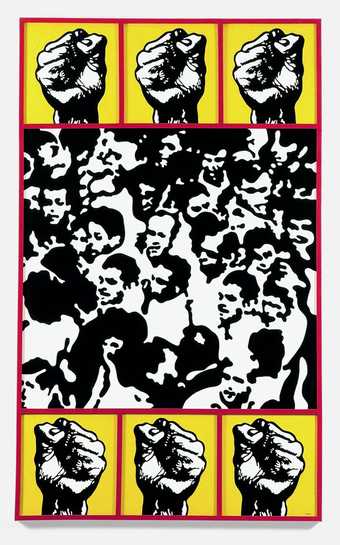Born 1944 in São Paulo, Brazil, where he lives and works.

Claudio Tozzi
Courtesy the artist
© Claudio Tozzi
Claudio Tozzi joined the University of São Paulo’s Faculty of Architecture and Urbanism (FAU) in 1964, yet never practiced architecture, working as a graphic artist instead. While at university he met luminary, critic and physicist Mário Schenberg, who quickly identified his work with Brazilian new figuration, a contemporary alternative to the concrete avant-gardes, alongside Wesley Duke Lee, Antonio Dias and Roberto Magalhães, among others. Tozzi’s interest in figuration developed from a necessity to popularise art in São Paulo, which offered very few platforms for young artists to exhibit, besides in yearly salons. He responded to the lacuna of official exhibition spaces by appropriating the intelligible language of commercial culture, through the aesthetics of pop art. In his works Tozzi addressed current political issues reported widely in the media including the space race and the Cuban revolution. Among his most iconic works are representations of astronauts and Che Guevara.
Claudio Tozzi’s effort to popularise art led him to draw images from the mass media, challenging accepted socio-cultural values as well as satirising the Brazilian information network, which was plagued by censorship during the military dictatorship. In the mid-1960s, crowds and political icons are among Tozzi’s recurrent subjects. Multitude 1968 reflects one of his persistent motifs: the crowd in protest. In 1968 the military regime in Brazil became notoriously more oppressive, to the extent that many artists and intellectuals were forced to flee the country. In São Paulo and Rio de Janeiro, political protests became a daily occurrence, in parallel to the May 1968 student revolts in Paris. Tozzi’s depiction of the crowd, through enlarged details juxtaposed with a series of raised fists, accentuates his effort to highlight the power of the individual within the multitude. By adopting pop’s accessible language, he proposed to sensitise a wider audience to the mobilising potential of art.
Sofia Gotti
September 2015

